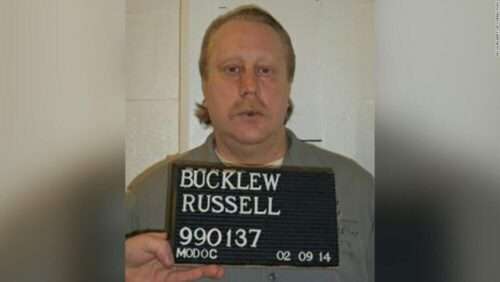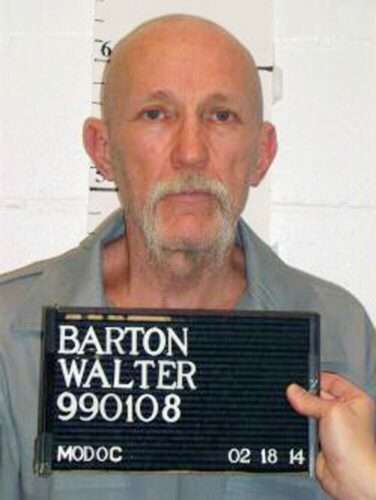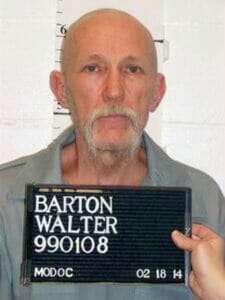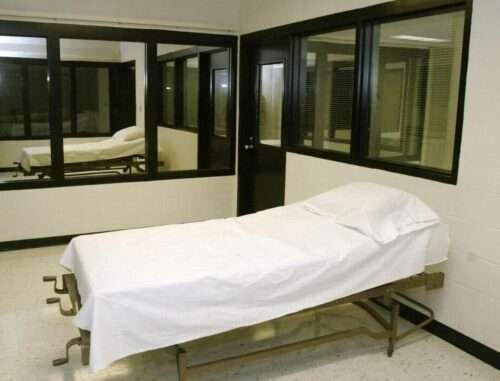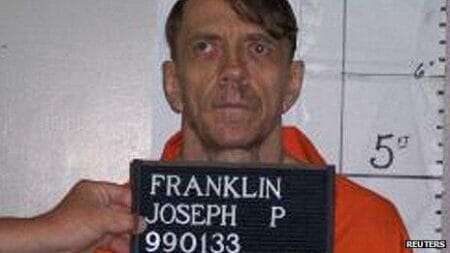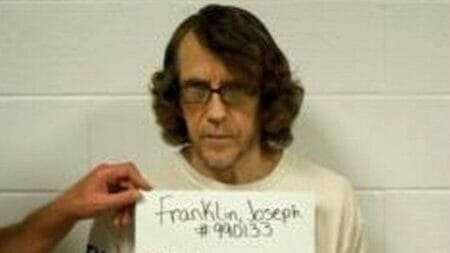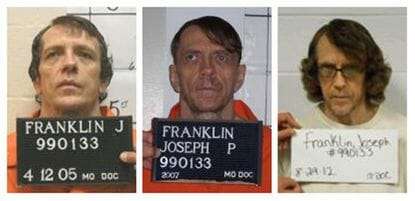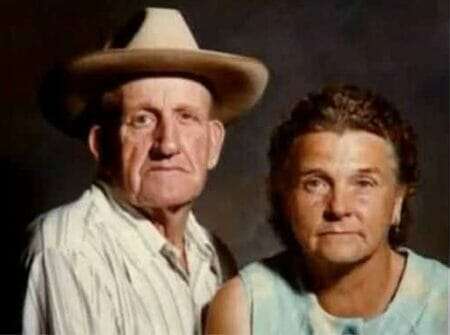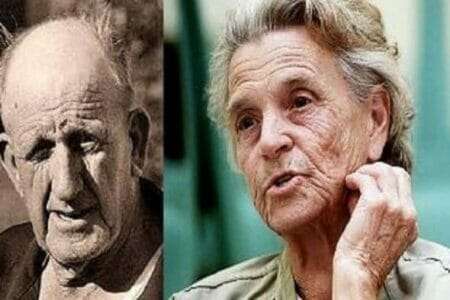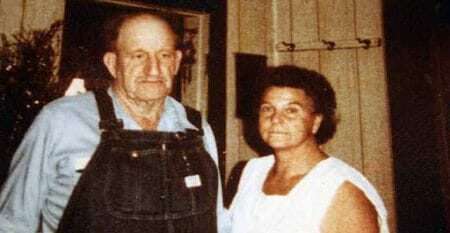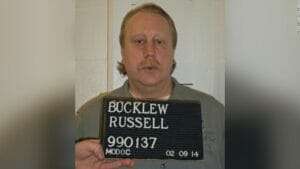
Russell Bucklew was executed by the State of Missouri for a murder committed in 1996. According to court documents Russell Bucklew would shoot and kill Michael Sanders who he believed was dating his ex girlfriend Stephanie Ray Pruett. Russell Bucklew would attempt to shoot Pruett son before he kidnapped and sexually assaulted Stephanie. Russell Bucklew would be executed by lethal injection on October 2, 2019
Russell Bucklew More News
Missouri executed Russell Bucklew on Tuesday evening despite concerns from his attorneys that he did not receive an adequate defense and that his rare lifelong disease would lead to a bloody and gruesome death.
Bucklew was declared dead at 6:23 p.m. Central time and showed no obvious signs of distress, according to the Associated Press. As Bucklew lay strapped on the gurney before the lethal drug was injected, he “twitched his feet” and looked around. Shortly after the injection, he took a deep breath and ceased movement, the AP reported.
In a Wednesday phone call with The Appeal, Bucklew’s attorney, Cheryl Pilate, said that the Missouri Department of Corrections took several steps to avoid a botched execution, including sedating him beforehand with Valium and elevating the gurney to ensure he would not choke on his own blood should a tumor caused by his illness burst. The state uses a single dose of pentobarbital in its executions and has refused to reveal its supplier. Witnesses did not observe the insertion of the IV, Pilate said.
“The reality is they’re completely strapped down, their extremities are completely covered up, which is not a transparent process,” said Pilate. “We truly don’t know what he experienced.”
Jeremy Weis, another Bucklew attorney, told The Appeal that in the days before his death, prison officials did not administer Bucklew’s pain medication on time and stopped giving him Klonopin, an anti-anxiety medication that he had been taking for years.
Pilate said she and Bucklew’s other attorneys were on the phone with Bucklew about an hour before the execution. Before they could say goodbye, they were cut off mid-sentence. “The line went dead. This is deliberate,” she told The Appeal. “The cruelty is the point.”
A Missouri Department of Corrections spokesperson did not immediately return a request for comment from The Appeal.
In September, Bucklew’s attorneys asked Governor Mike Parson to spare his life and commute his sentence to life without parole. On Tuesday morning, Parson’s spokesperson, Kelli Jones, said in a statement that his request had been denied. She did not return a request for comment from The Appeal asking to explain Parson’s reasons for the denial.
Bucklew was the 89th prisoner Missouri executed since 1976, when executions resumed after a Supreme Court ruling, and the first since Parson became governor.
Bucklew was convicted of murdering Michael Sanders in 1996 and sentenced to death the following year. The killing was capital because Bucklew had raped his ex-girlfriend, Stephanie Ray, during the commission of the crime.
It would be more than two decades before Bucklew’s defense team would conduct an investigation into his background, a constitutional obligation in death penalty cases. Their failure to do so during his trial, his current attorneys have argued, meant that the jury, when deciding Bucklew’s fate, never considered the abuse and addiction he suffered early in his life.
In 2018, Bucklew’s attorneys discovered that at the time of his crime, he was addicted to opiates he had been prescribed for his disease. The medications, they learned, also sent him into a rage. The opiates were used to treat cavernous hemangioma, a rare condition that caused blood-filled tumors to form. For years, Bucklew’s legal team argued that executing Bucklew by lethal injection would cause the tumors to burst and he would suffocate on his own blood, amounting to torture. Bucklew’s execution had been stopped twice before over this issue.
In April, the U.S. Supreme Court ruled that Bucklew’s execution could proceed, despite the risks. In his majority opinion, Justice Neil Gorsuch wrote that the Eighth Amendment does not guarantee a painless execution.
“This is the first time in this country that a person has been executed when consensus was clear that it could be torture,” the ACLU wrote in a press release on Tuesday night. International leaders from the Inter-American Commission on Human Rights had condemned Missouri’s attempts to execute Bucklew on those same grounds.
Former Cape Girardeau County Prosecutor Morley Swingle, who prosecuted Bucklew in 1997, was present at the execution. Afterwards, he boasted that Energizer contacted him asking him to stop using “homicidal Energizer bunny” in reference to Bucklew, a Missouri Net reporter tweeted.
Leading up to the execution, Bucklew told The Appeal in a statement through his attorneys that he had been “feeling emotional but nothing over the top.” He wrote that he hoped Parson would let him live because he was remorseful for his crime and had changed during his incarceration. Notably, he said, he had been taken off the medications that caused him to become angry.
“I want people to know that they should live your life with honor, always keep your word, respect your elders and think before you act,” he said. “These are the things I have learned in life.”
https://theappeal.org/missouri-executes-russell-bucklew-threat-botched-execution/
